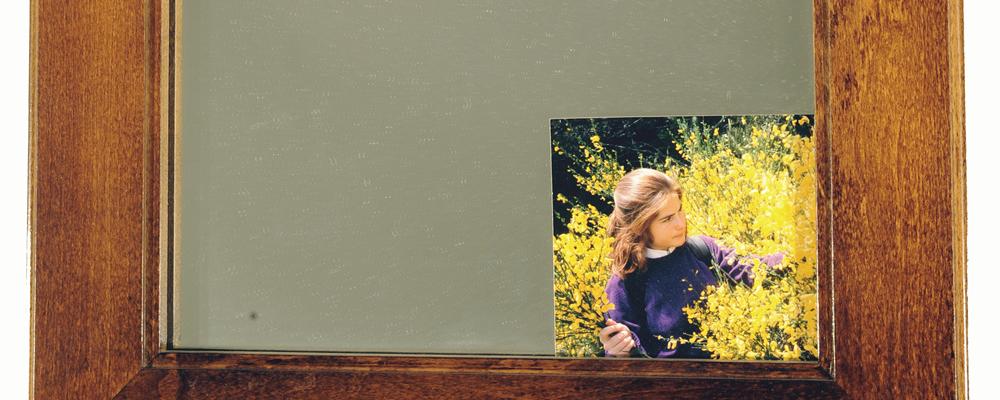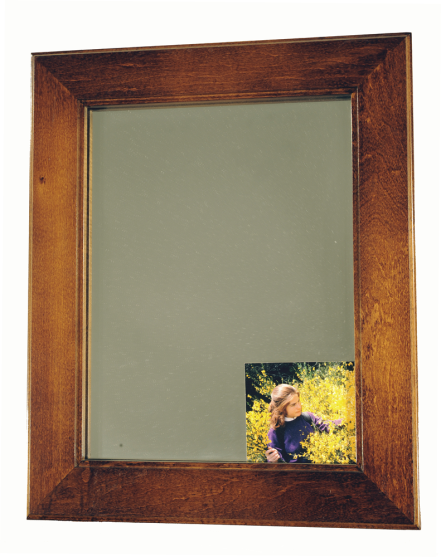Persons of Interest
7 February 2015 – 5 April 2015
Persons of Interest
February 7, 2015 – April 5, 2015
Where are you right now? As you read these lines, are you standing in an art gallery, browsing on an iPhone, leafing through a brochure? Is this moment public or private? Recorded or unrecorded? Intimate or anonymous? These are questions which hover around our daily lives like the focus rings of surveillance cameras — an image made memorable by the hit TV show Person of Interest. More than ever, how we see ourselves is inseparable from how we are being seen.
For Ken Lum, a former Vancouver artist now based in Philadelphia, the art gallery is an ideal place to ask these questions. As a space, the gallery is both public and private: public in that anyone is free to enter; private in that art is a gateway to deeply personal experiences. Lum’s internationally acclaimed installation, Photo-Mirrors (1997), acquired by the MacKenzie Art Gallery in 2008 and shown here for the first time, is among his most compelling works on this topic. Look into any one of the ten domestic mirrors and you will see yourself (and anyone else in the vicinity). But framing your visage are other images — random snapshots of soccer kids, Japanese tourists, smiling college grads, etc. — casually tucked into the frame like you might in a mirror at home. The public act of looking at art suddenly meets the private act of looking at a cherished, if out of place, snapshot. But what is really out of place? The photos, or you, gazing in the mirror with your public face on for display? That moment of uncertainty is the hallmark of Lum’s work.
Public and private selves uneasily align in the other works in the exhibition, all of which are from the MacKenzie permanent collection. Dan Graham’s pioneering performance piece, Performer/Audience/Mirror (1975), is an analytical dissection of public image and private intention. Over the course of the performance, Graham describes his own actions and the audience’s reactions in minute detail, a blow-by-blow of how intentions manifest in the smallest gestures. As Graham notes, “I was gearing myself toward describing myself or them the way they want to see me, or want to see me see them.” Adad Hannah freezes moments from this performance in his video Performer/Audience/Remake (2008), allowing viewers to further analyze the complex system of gazes, interpretations and reactions. In the process, selfhood and intentionality is shown to be a hall of mirrors.
Portraiture itself is based on the idea that a public image can give access to something of the sitter’s private interior. Dmytro Stryjek’s portraits expose an omniverous appetite for images of people from all walks of life — politicians, entertainers, models, poets, saints, whatever — and show how images feed our desire for a connection to what we don’t have, be it power, fame, glamour, genius, or holiness. The same lack is exposed in Natalka Husar’s portraits of gangsters in post-Soviet Ukraine. As she notes, “Old Soviet-style and new-capitalist corruption collide in the fictitious portraits, the wheeler-dealer thugs are put on trial not as an accusation but as a record of the cultural and psychological damage they have sustained.”
Every time we appear in a mirror, a snapshot, a selfie, or a surveillance camera, we become persons of interest. As the works in this exhibition demonstrate, those moments are implicated in the very definition of our private lives and public identities.
Organized by the MacKenzie Art Gallery with the support of the Canada Council for the Arts, the Saskatchewan Arts Board, SaskCulture, the City of Regina, and the University of Regina.
Image: Ken Lum, Photo-Mirror: summer bloom, 1997 (detail), maple wood, mirror, photograph, 45.7 x 37.5 x 4 cm. Collection of the MacKenzie Art Gallery, gift of the artist. Photo credit: Don Hall
Events
-
![Three figures march through the winter snow carrying a transparent canoe shaped structure that glows from the inside.]()
Studio Sunday
It’s 2050: Sci-fi comics
28 April 2024
-
![A wax figure of a lady in all black with four arms, each arm is controlling a small puppet.]()
Studio Sunday
Artist Workshop with Sylvia Ziemann
5 May 2024
-
![Still from Wednesday Kim's Sleep Deprived Workers (detail), 2019--2020. Courtesy of the artist.]()
Online Event
Wake Windows: The Witching Hour Virtual Opening
9 May 2024





